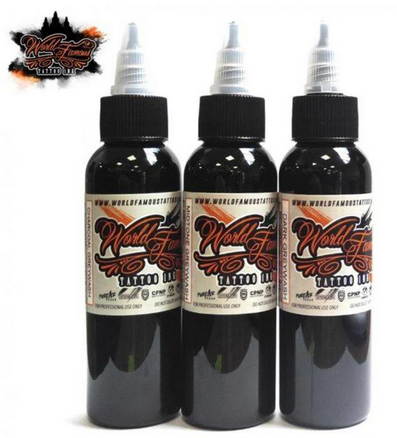Consumers across the world are concerned over the origin, safety, and sustainability of more and more products.
Tattoos have been a part of the human experience for eons. There is evidence of tattoo art on mummified human remains going back as far 3100 BC.1,2 Exactly how long humans have been decorating with ink is unknown though. Whether as beautification, ceremonial, or as indication of social class, tattoos have been and continue to be popular.
In the USA and worldwide, the tattoo industry is experiencing growth. There are an estimated 20,000 tattoo parlors in the USA and an estimated 36% of Americans between the age of 18 and 29 have at least one tattoo.5 Furthermore, tattoos expanded into new growth areas such as permanent make up.
Many of these consumers have different reasons for tattoos than in the past. They also have new concerns and desires. They are savvy, discerning, and aware consumers that care about safety, hygiene and sustainability.
Just as in food and personal care products overall, there is a push towards more natural and sustainable ingredients. In addition, consumers have a wealth of information at their finger tips and are not afraid to conduct deep dives into product ingredients and origin.
In the USA, tattoo inks are regulated as cosmetics and therefore fall under the jurisdiction of the US Food and Drug Administration. Even though ink has been the domain of the US FDA, ink and its manufacture has been somewhat neglected by regulatory bodies.
 Now that is changing. With the new and rapidly growing customer base comes new scrutiny. In May, 2019, the FDA reported an Ink Recall of several tattoo inks made by US producers due to microbial contamination.3,4
Now that is changing. With the new and rapidly growing customer base comes new scrutiny. In May, 2019, the FDA reported an Ink Recall of several tattoo inks made by US producers due to microbial contamination.3,4
Now many people are asking: What’s in this ink?
Tattoo inks are not all the same, but in general, they are water based mixtures of inorganic and/or organic pigments with some humectant(s), surfactants, astringents, rheology modifiers, pH modifiers and preservatives.
For decades, manufacturers have used cosmetic and/or industrial grade preservatives to provide a shelf stable ink. Chemistries such as formaldehyde donors, parabens, aldehydes, etc. were added to the aqueous suspensions and off they went.
Now, those producers have US and international customers asking:
“what’s in this ink?” “why is it in there?” “is it safe?” “is it natural?”
Currently there is little enforcement of the FDA mandate to label tattoo inks the same as other cosmetics. Many tattoo inks do not list the ingredients in the product and are not compliant with FDA guidance for labelling cosmetic products. It may well come to pass that in the future, full disclosure of ingredients with INCI names will be required.
Tattoo inks, in general, use water, natural pigment, vegetable glycerin, and other ingredients on the “natural side” of things. Traditionally, the least “natural” ingredients in ink have been the preservatives. Whereas there is no formal FDA definition of what constitutes a “natural” cosmetic product, there are some industry standards that are followed. For example, certifying organizations such as ECOCERT/COSMOS and the Natural Products Association will, for a fee, review products and ingredients and make decisions on how “natural” those products are. product offered by Copperhead Chemical.
Copperhead Chemical Company Inc. works with some of the leading ink manufacturers in the world to develop new preservatives and preservative systems for tattoo ink (and other cosmetics).
Copperhead’s preservative ingredient Biopolysan® 220B is currently used in some of the highest quality inks, including some of the products recently tested by FDA. The inks that contained Biopolysan® 220B at between 1-2% were shown to be free of microbial contamination and safe for use. Biopolysan® 220B is made from bioidentical benzyl alcohol, a natural component of certain plants, and Laurest® 1220, which is a medium chain, antimicrobial monoglyceride that enjoys a natural cosmetic ingredient attestation. This combination provides safer, more natural preservation of inks. In addition, Biopolysan® 220B is low odor, colorless, and water soluble so replacing other, older preservatives is easy.
Copperhead and its technical consultants are happy to work with our customers to ensure safe, adequately preserved products across the cosmetic and personal care industry, including tattoo inks. There is no substitution for testing of each product via validated methods to ensure adequate identity, concentration, stability and preservation.
For more information visit Copperhead Chemical.
© 2019 AuthorityTattoo. All rights reserved. https://authoritytattoo.com/history-of-tattoos/
Uwe Wollina. Severe Adverse Events Related to Tattooing: A Retrospective Analysis of 11 Years. Indian J Dermatol. 2012 Nov-Dec; 57(6): 439–443.
Brett Molina, USA TODAY. Published 8:21 a.m. ET May 16, 2019 https://www.usatoday.com/story/money/2019/05/16/tattoo-inks-recalled-fda-bacteria-contamination/3690764002/
https://www.fda.gov/cosmetics/cosmetics-recalls-alerts/fda-advises-consumers-tattoo-artists-and-retailers-avoid-using-or-selling-certain-tattoo-inks
http://www.historyoftattoos.net/tattoo-facts/tattoo-statistics/
Biopolysan®, Laurest® and Copperhead Chemical Company® are registered trademarks of Copperhead Chemical Company Inc.
World Famous Ink® is a registered trademark of the World Famous Ink Company.

Recent Comments